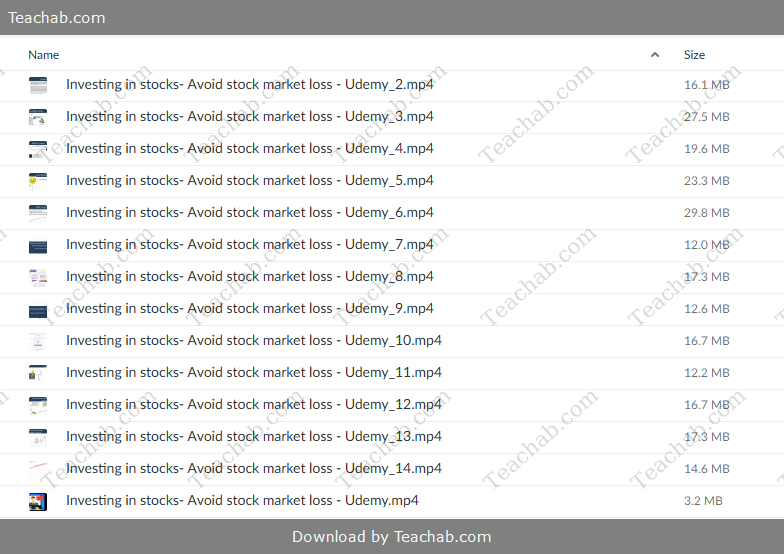-
×
 Rewire the Anxious Brain: Neuroscience-Informed Treatment of Anxiety, Panic and Worry By Marwa Azab - PESI
1 × $23.10
Rewire the Anxious Brain: Neuroscience-Informed Treatment of Anxiety, Panic and Worry By Marwa Azab - PESI
1 × $23.10 -
×
 Understanding the Needs of the Dying: Bringing Hope, Comfort and Love to Life's Final Chapter By David Kessler - PESI
1 × $23.10
Understanding the Needs of the Dying: Bringing Hope, Comfort and Love to Life's Final Chapter By David Kessler - PESI
1 × $23.10 -
×
 Ten Best-Ever Anxiety Treatment Techniques By Margaret Wehrenberg - PESI
1 × $23.10
Ten Best-Ever Anxiety Treatment Techniques By Margaret Wehrenberg - PESI
1 × $23.10 -
×
 Black Gold Strategies by Basecamptrading
1 × $23.10
Black Gold Strategies by Basecamptrading
1 × $23.10 -
×
 Using EMDR Across the Lifespan By Robert Tinker - PESI
1 × $23.10
Using EMDR Across the Lifespan By Robert Tinker - PESI
1 × $23.10 -
×
 Healthy Hormone Done-For-You By Lorene Sauro
1 × $23.10
Healthy Hormone Done-For-You By Lorene Sauro
1 × $23.10 -
×
 ECOM ACADEMY DAN DASILVA | MAKE 6K PER DAY WITH SHOPIFY STORE
1 × $23.10
ECOM ACADEMY DAN DASILVA | MAKE 6K PER DAY WITH SHOPIFY STORE
1 × $23.10 -
×
 What to Do in the First 90 Days of Your New Job
1 × $23.10
What to Do in the First 90 Days of Your New Job
1 × $23.10 -
×
 Intermediate To Advanced Breath-Control Course By Simon Borg-Olivier
1 × $39.00
Intermediate To Advanced Breath-Control Course By Simon Borg-Olivier
1 × $39.00
Investing in stocks: Avoid stock market loss
$199.00 Original price was: $199.00.$15.40Current price is: $15.40.
SKU: C55vip.10014NF8T5U24
Category: Download
Tags: Avoid stock market loss, Investing, Investing in stocks, Stocks
Investing in Stocks: Avoid Stock Market Loss in 2025 – Digital Download!

Investing in stocks: Avoid stock market loss
Overview

Effective Strategies to Safeguard Your Investments in the Stock Market in 2025
Successfully navigating the stock market requires careful planning and strategy, particularly in the ever-evolving landscape of 2025. With shifting economic trends and investor sentiment, it’s crucial to adopt techniques that minimize risk and maximize opportunities. This guide outlines expert-backed strategies to help you avoid stock market losses while capitalizing on growth potential, focusing on diversification, market conditions, and emotional control.
The Crucial Role of Diversification in Investment Success
Diversification is a cornerstone of any successful stock market strategy. By spreading investments across various sectors such as technology, healthcare, consumer goods, and finance, you reduce the risk of significant losses from downturns in any single market area. A well-rounded portfolio typically includes 25 to 30 different stocks.
For example, investing solely in tech stocks may offer high returns but comes with volatility. In contrast, diversifying into more stable sectors like utilities and pharmaceuticals can provide a buffer against sharp market corrections. A mix of high-growth and undervalued stocks ensures a balance between risk and return, helping to protect against downturns.
Advantages of Diversification:
-
Risk Mitigation: Distributing investments decreases the likelihood that a downturn in one area will significantly affect the entire portfolio.
-
Enhanced Potential for Returns: Exposure to various sectors offers opportunities for growth across different markets.
-
Stability: A diversified portfolio tends to experience less volatility, providing more consistent returns over time.
Exercise Caution with High-Yield Investments
High-yield investments, while attractive, often come with significant risks. Companies offering unusually high dividends may be facing financial difficulties, signaling potential instability. It’s crucial to evaluate the financial health of such investments before committing.
Key Steps for Evaluating High-Yield Investments:
-
Conduct Research: Investigate the company’s financial health by reviewing key metrics like profit margins, debt levels, and dividend history.
-
Prioritize Quality: Favor investments in companies with a consistent history of stable earnings and dividend payments.
-
Balance Your Portfolio: Mix both high- and low-yield investments to maintain a balanced risk profile.
Avoid Emotional Decision-Making in Investments
Emotional investing can lead to rash decisions, especially during periods of market volatility. The temptation to sell in response to short-term downturns may result in locking in losses that could recover over time. A calm, long-term approach is essential.
Techniques to Overcome Emotional Investing:
-
Establish Clear Goals: Define specific investment objectives and timelines, helping you stay focused on long-term targets rather than reacting to daily market fluctuations.
-
Practice Mindfulness: Regularly reflect on your investment choices to ensure they align with your long-term strategy.
-
Reassess, Don’t React: Instead of making hasty changes based on emotional impulses, review your portfolio periodically and make decisions based on thorough analysis.
Preparing for Market Corrections and Seizing Opportunities
Having a proactive plan for market corrections is vital for identifying opportunities when stock prices drop. Maintaining cash reserves not only ensures liquidity but also allows you to take advantage of lower prices during downturns.
Effective Strategies for Market Corrections:
-
Maintain Cash Reserves: Keep a portion of your portfolio in cash or equivalents for quick action during corrections.
-
Monitor Market Trends: Stay informed about economic indicators that may signal upcoming corrections.
-
Learn from Historical Corrections: Review past market corrections to understand how to respond effectively in the future.
Adapting to Changing Market Conditions
Shifts in economic factors, such as interest rates and trade policies, can significantly impact stock performance. Staying informed about macroeconomic trends helps you make the necessary adjustments to your investment strategies.
Key Indicators to Monitor:
-
Interest Rates: Rising rates can reduce borrowing and spending, negatively affecting stock prices.
-
Trade Policies: Changes in trade agreements or tariffs can increase market volatility.
-
Economic Indicators: Regularly monitor factors like unemployment rates, inflation, and GDP growth for insights into market health.
Dealing with Inflation and Protecting Investments
Inflation can erode the value of your investments, making it crucial to incorporate inflation-protected assets into your portfolio. Consider including Treasury Inflation-Protected Securities (TIPS) and other assets that can outpace inflation.
Inflation-Proof Investment Strategies:
-
TIPS: Allocate a portion of your investments to TIPS to safeguard against inflation.
-
Growth Stocks: Invest in companies that traditionally outperform inflation, providing long-term growth opportunities.
-
Continuous Monitoring: Keep track of inflation trends and adjust your portfolio as necessary to mitigate its effects.
Risk Management for Near-Retirees
For investors approaching retirement, reducing risk becomes a priority. Shifting focus from stocks to more stable, income-generating investments helps safeguard retirement savings.
Retirement Investment Strategies:
-
Bond Investments: Consider increasing allocations to bonds, which tend to offer more stability and income.
-
Cash Equivalents: Keep a portion of your portfolio in cash or equivalents for added security.
-
Consult a Financial Advisor: Engage with a professional to create a retirement strategy that aligns with your goals.
The Benefits of Dollar-Cost Averaging
Dollar-cost averaging (DCA) involves consistently investing fixed amounts, regardless of market conditions. This strategy helps smooth out the effects of market volatility and allows for gradual wealth-building.
Advantages of Dollar-Cost Averaging:
-
Simplicity: DCA is easy to implement, making it accessible for both novice and seasoned investors.
-
Reduced Anxiety: Regular, fixed investments help minimize the emotional impact of market fluctuations.
-
Cost Efficiency: Over time, DCA leads to buying more shares when prices are low and fewer when prices are high, balancing the average cost of investments.
Understanding the Broader Macro Environment
Geopolitical events, central bank policies, and economic health can greatly influence market performance. Staying updated on macroeconomic factors is crucial for making informed investment decisions.
Macro Analysis Tips:
-
Stay Informed: Regularly read financial news to stay abreast of global developments.
-
Sector-Specific Risks: Identify industries that may be negatively impacted by current economic conditions and adjust your portfolio accordingly.
-
Adapt Strategies: Continuously evaluate and adapt your investment strategy based on evolving macroeconomic trends.
Conclusion
Investing in stocks requires discipline, strategy, and adaptability. By implementing the strategies outlined above—diversifying your portfolio, controlling emotional reactions, preparing for market corrections, and staying informed—you can better shield your investments from market losses. Successful investing is about more than just asset allocation; it’s about being proactive and responsive to the market’s ever-changing nature. By applying these principles, you position yourself for greater financial stability and growth, ensuring a prosperous future.
Frequently Asked Questions:
Business Model Innovation: We operate a group buying strategy, allowing participants to share costs and access popular courses at reduced prices. This model benefits individuals with limited financial resources, despite concerns from content creators about distribution methods.
Legal Considerations: The legality of our operations involves complex issues. Although we don’t have explicit permission from course creators to resell their content, there are no specific resale restrictions stated at the time of purchase. This ambiguity creates an opportunity for us to provide affordable educational resources.
Quality Control: We ensure that all course materials purchased are identical to those offered directly by the creators. However, it’s important to understand that we are not official providers. As such, our offerings do not include:
– Live coaching calls or sessions with the course author.
– Access to exclusive author-controlled groups or portals.
– Membership in private forums.
– Direct email support from the author or their team.
We aim to reduce the cost barrier in education by offering these courses independently, without the premium services available through official channels. We appreciate your understanding of our unique approach.
Be the first to review “Investing in stocks: Avoid stock market loss” Cancel reply
You must be logged in to post a review.












Reviews
There are no reviews yet.